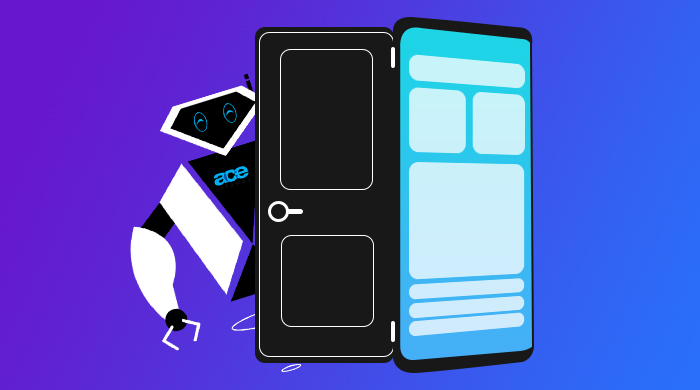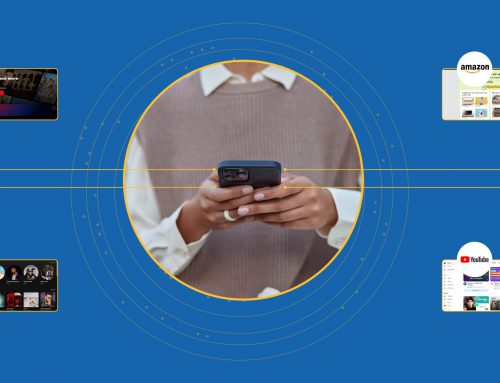Table of Contents
Have you ever used Spotify and got astounded with its profoundly personalized recommendations? Or visited a company’s website, and got delighted getting help from the digital assistant at your service, no matter what hour of the day it was. What do you think makes this possible? The answer to this question is Artificial Intelligence and Machine Learning.
Originated in the computer sciences, artificial intelligence and machine learning have been consistently evolving and developing since their introduction in the 1950s. Based on its surging popularity, it is predicted that in the coming years, the global artificial intelligence software market will experience rapid growth, reaching around 126 billion USD by 2025.
Artificial Intelligence and Machine Learning prove to be extremely helpful for companies to serve their customers adequately, owing to its advantages, like- personalization, advanced search, added new security metrics like fingerprints and face recognition, predicting user behavior based on the factors like gender, age, past searches, location, etc.
In light of this fact, many companies have already incorporated it into their business, and the remaining ones are planning to do the same. Integrating AI/ML in the existing app can be great for your business as well as customers, however, being a monumental shift, it happens to be an extremely challenging task. Here is an effective roadmap to guide you through the integration process-
Steps to Integrate Machine Learning and Artificial Intelligence into your Mobile Application
Step 1: Preparation and Planning
Preparation and planning are the foundation of the integration process. So, before hopping into the integration process, you should have a fully-fledged plan in your hand. Following are the factors you should consider while planning for the integration-
-
Find out the areas where AI and ML can be incorporated
The foremost preparation you should do before the integration is to identify the areas where you can implement AI/ML. List down the kind of features you want to include in your application – Behavioural, Recommendation, or Reasoning.
-
Know Your Data
AI/ML works on data. Hence, you need to find out the complete details about the data, like-
- Where your data is coming from?
- At what level you will have to refine it?
- Is your ACID (Atomicity, Consistency, Integrity, and Durability) compliant?
-
Jot down the performance metrics
Merely including features in the application cannot guarantee performance, you need to test it. So, before starting the implementation process, list down the performance metrics that conforms with your objective. The performance metrics form the base of the testing process, based on which you can measure the performance of your application.
-
Select the best fit technology, tools, and platforms
Choose the best fit technology, tools as well as a reliable platform to develop your application. The tools have a huge contribution to the integration process- regulating the backup, security, optimization, testing, as well as the development process. Hence, you ought to choose it wisely. Also, there are numerous platforms available in the market that can help you through the AI/ML integration in your application, some of the best ones are as follows-
- Azure
- Api.i
- Tensorflow
- IBM Watson
- Amazon AI
Step 2: Feasibility Check
Now that you have prepared a plan, it’s time for the feasibility test. Determine whether integrating AI/ML in your existing app will be feasible for you or not. Feasibility check is done on 5 major verticals-
-
Technical Feasibility
In this phase, find out the answers to the following questions-
- Whether you have the technical resources necessary for the integration process?
- Whether the new changes will affect the existing functionality of your application?
- Is your technical team capable of integrating AI/ML into your existing application? If not, hire a competent team with AI/ML expertise.
-
Economic Feasibility
- Check out whether the integration process fits your budget?
- Is the integration process worth investing in?
- Will it incur profits for your business?
- Will it attract new customers and also enhance the experience of the existing users?
-
Legal Feasibility
As data plays a prominent role in AI/ML, you should be cautious about its usage. Do not forget to consider legal factors while using data as well as including features. Make sure the features you want to integrate as well as data you want to use in your application abide by the laws and acts such as social media law and data protection act.
-
Operational Feasibility
Operational feasibility is the most important part of this part, checking whether your requirements can be fulfilled by the integration process. It also gives you an idea about the effectiveness of the plan prepared by you, whether it is on the same page as your requirements. If not, you can make the necessary changes in the initial phases, preventing errors or changes during the development process.
-
Scheduling Feasibility
Estimate the time required to complete the integration process. To ensure the accuracy of the schedule, always keep a realistic goal, which can be achievable. To set a realistic schedule, you need to do a thorough analysis. Any discrepancy in the schedule can affect other stages of the integration process as well.
Step 3: Inject the changes
After checking the feasibility of your plan, you are ready to inject the changes to your existing application. The most important factor to consider here is the development team who will be handling the integration process. To mitigate any kind of risks in the process and ensure flawless integration, make sure your development team has expertise in Artificial Intelligence and machine learning.
Step 4: Test
The final step before launching your upgraded application is testing. Test your application for the performance metrics you listed in the initial phases of the development process. Once the application passes all tests successfully, you can launch your application.
Are you ready to upgrade your application and make it future-ready?
AI is the future of technology, owing to its contribution to the user experience as well as business productivity. AI/ML, having the potential to offer a highly personalized user experience, tends to increase business productivity by 40% – the biggest reason why companies are looking forward to including AI/ML in their application.
If you are also one of them, looking to harness the power of AI/ML in your application and your business, however, the complexity of the process is holding you back, so you are at the right place. Having years of experience in the field, our AI/ML experts can help you streamline the integration process at utter ease. So, wait no more, Reach out to us and make your application future-ready.


























Leave A Comment